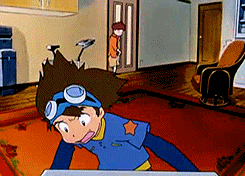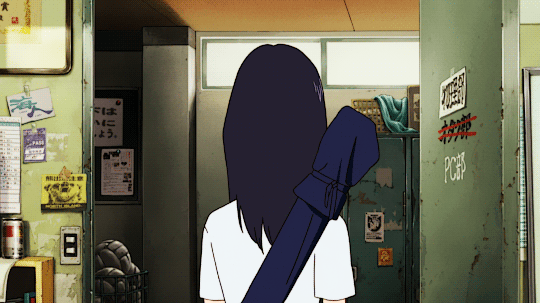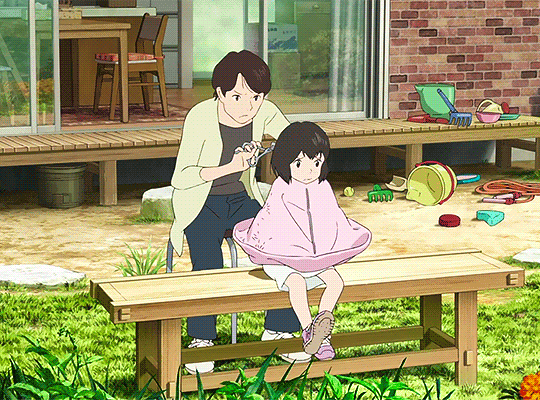originally posted at https://canmom.tumblr.com/post/685344...
Hi friends. Apologies for running late once again. It is once more Animation Night. Still grieving, but this ritual is important.
Tonight, I’ve decided it’s time to go back to our friend Mamoru Hosoda, last seen on Animation Nights 15, 47 and 61…

The occasion is of course the release of Hosoda’s latest movie Belle (竜とそばかすの姫, Ryū to Sobakasu no Hime - lit. The Dragon and the Freckled Princess). This film reprises a theme that was very prominent in Hosoda’s early films such as Summer Wars and in fact the franchise film Digimon Adventure: young people going into an immersive digital world. It’s finally escaped the film festivals and, of course, landed in the hands of fansubbers.
Since I’ve already told the story of Hosoda’s career, I won’t write a huge writeup tonight. But I will point to a fascinating recent article by kVin which draws out some parallels between Hosoda’s One Piece film, Baron Omatsuri and the Secret Island, not entirely subtly reflecting his terrible experience at Studio Ghibli… and the recent film Pompo the Cinephile directed by Takayaki Hirao. We’ll get to Pompo at some point soon, trust me!
In previous Animation Nights, or kVin’s articles, you can read about the clockwork two year cycle that Hosoda uses to produce his films, and their characteristic elements: a strong focus on family relationships, kagenashi (unshaded) designs, splendid and charming character animation drawing on the many talented animators with whom Hosoda has cultivated relationships. With good reason, he’s one of the most popular ‘auteur’ directors in anime at the moment.

That all had to start somewhere, though, and for Hosoda that was his franchise films at Toei, the first being a series of short films relating to Digimon Adventure (which would be recut as one movie in the US, often called Digimon: The Movie). I never saw this as a kid - for some reason the kids at my school imagined a kind of rivalry between Pokémon and Digimon, and rather than enjoy both I ended up receiving this sense of Digimon as an inferior knockoff best skipped! - but they’re well-remembered, as this detailed writeup by kVin 20 years on in 2019 attests.
Digimon began life as a line of Tamagotchi-style ‘digital pets’ made by WiZ/Bandai in 1997, making it just narrowly younger than Pokémon. The premise is that there is a virtual realm in which you can go and form relationships with little virtual creatures, and beyond that, things are rather vague, and there wasn’t a lot of story to it.
This changed at the end of the 90s, with a move to make a PS1 game and a TV anime to plant the desire for their products in the soft vulnerable minds of children. To this end, they hired the venerable Toei, still one of the largest anime studios who handle many of the really ‘big’ franchises such as One Piece. So this is where Hosoda came in, working on a short film that was to become the pilot for the anime.

In kVin’s account, Hosoda played quite a large role in shaping the story:
Chances are that your mental image of an anime project meant to promote a property with aspirations of becoming a merchandising behemoth is restrictive, with countless guidelines set before the creators come into play. And while that’s true in many situations, it doesn’t necessarily mean that they’re meticulously planned or that producers know what they want in the first place. As mentioned by Hosoda himself, Digimon Adventure: The Movie (not to be confused with the embarrassing western mishmash) was in the works before the TV show was pitched, even though it’s now seen as nothing but its prologue. There was no real narrative to use as a springboard either, nor was there an established cast of characters; though the looks of certain characters like protagonist Taichi were determined by cross-media obligations with series that preceded the anime like Digimon Adventure V-Tamer 01, it was Katsuyoshi Nakatsuru‘s designs that served as the starting point for the cast
Some of Hosoda’s early vetoed ideas sound wild:
Execs would vaguely nudge the staff in certain directors and sometimes veto their wildest ideas – we’ll never have Hosoda wacky Digimon comedy set in the 60s and led by Taichi’s dad – yet never offer constructive guidance.
Despite these less than auspicious circumstances, the freedom granted to Hosoda gave him the opportunity to make something much better than one might presume for this kind of project, with appearances of animation legends like Mitsuo Iso(!) perhaps prefiguring his later Dennou Coil; it is also the start of what we could call the ‘bubble’ around Hosoda:
Regular Hosoda allies like Takaaki Yamashita (supervisor for the first of many Hosoda films) and Hideki Hamasu (ace animator of sorts, a role he’d also reprise in multiple occasions) are joined by people like Mitsuo Iso who need no introduction, but it’s the hyperrealism in Hisashi Mori‘s animation that anchors the battle to reality in such hair-raising way.
This touches on a question we might have - it takes hundreds of people working diligently for a long time to make a film, and yet, we often fall into the habits of auteurism where every major artistic quality is seen as ultimately flowing from the director. Perhaps the reason this works at all is because of these clusters of relationships: ‘Mamoru Hosoda’ is a shorthand for not just the man himself, but also the group of his friends/colleagues/comrades/whatever you wanna say, who we can expect to come back on many of his films with their own particular touch. Altogether we can refer to the ‘will’ that shapes a film as something of the egregore created by this group. (Talking about studios is another such handle on identifying these clusters of people.)
Hosoda would go on to direct two more short films for Digimon, the main one being Our War Game! (2000); these would be awkwardly sutured into a movie along with one of the post-Hosoda movies in the dubbed release. We’re here for Hosoda though so rest assured I’m getting the short films.

A full ten years after Digimon, Hosoda had left franchise films behind and gone to work instead with Madhouse, creating the delightful The Girl who Leapt Through Time which we watched way back on AN 15. This is where we come to Summer Wars (2009), which reprises this idea of a virtual reality battle between kids, developing the ideas of Our War Game. Here, a virtual social network heavily integrated into infrastructure causes chaos when hacker kids accidentally activate an evil AI.
The film is set in Ueda, a town near where Hosoda grew up with historical significance as a fortress used by the Sanada clan during the sengoku period. By now we’ve reached the mature version of Hosoda’s style: the clean kagenashi look, emphasis on energetic character animation, and family relationships are all right there; main character Kenji is staying with his friend Natsuki’s dying grandmother and she gets caught up in the chaos. It sounds delightful honestly and I’m really looking forward to watching it; regrettably I don’t have a detailed writeup of this one beyond the usual material on Hosoda.

Then at last we have Belle - once again coming to a digital world, this time just slightly more than ten years on! Hosoda’s latest film follows a seventeen-year-old girl Suzu who lost her ability to sing after the death of her mother, but rediscovers her passion for performance as an avatar in a colourful virtual world. Here, she gets drawn into the intrigue surrounded by a mysterious figure called the ‘Dragon’ after he disrupts one of her concerts. This time, the digital world spills out into the real in a different way: a vigilante named Justin starts threatening both Suzu and the ‘Dragon’ with doxxing, essentially.
The film is notable for being one of Hosoda’s first films to make heavy use of CG; the scenes inside the virtual world use 3DCG to attempt to hit that sense of overwhelming spectacle, while more usual usual cel animation is used outside. It also breaks a little from strict kagenashi with some use of digital compositing and filters, although the designs still carry that familiar simplicity and direct, childlike appeal. This change proved a little controversial for fans of Hosoda, and I’m going to be interested to see how well it holds up…
And sadly that’s about all I have time to write! Animation Night will go live shortly at https://twitch.tv/canmom - hope you can join me there! And afterwards I think I may stay up to try and get drawing again, but we’ll see.
Comments